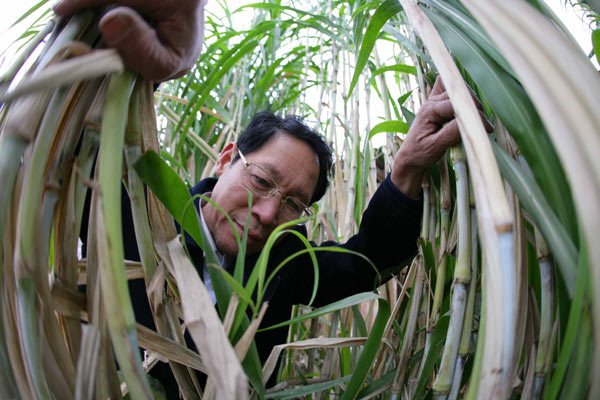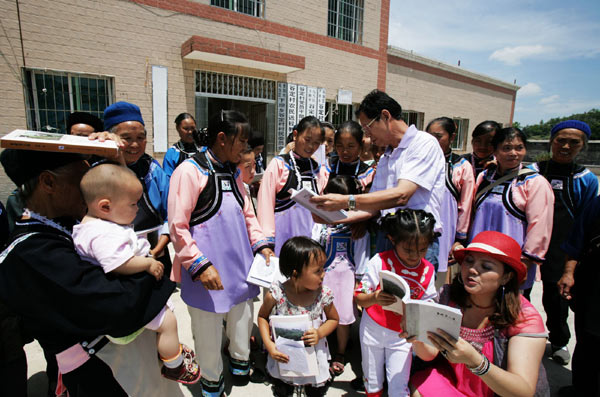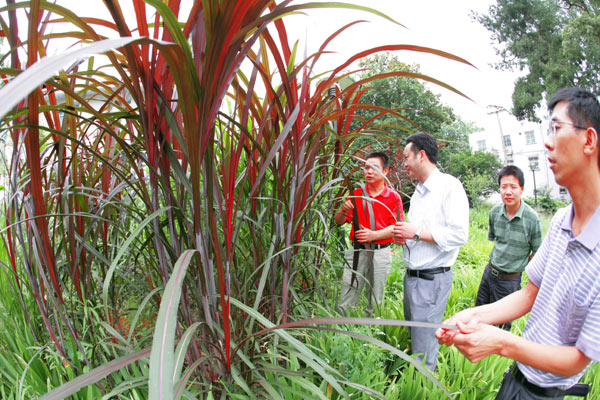Book shows how to grow honeysuckle flower
Updated: 2011-08-16 15:05
By Yang Jun and Qiu Bo (chinadaily.com.cn)
|
|||||||||||
 |
|
Honeysuckle flower, a type of drought-proof herb and animal fodder, can grow seven to eight meters a year. [Photo/ China Daily Guizhou Bureau] |
A book introducing the honeysuckle flower, a special medicinal herb, was published and released to the public in Southwest China's Guizhou province on Sunday, an expert said.
The 16-chapter book, which was also released in an electronic form, describes the process for growing and producing the honeysuckle flower, demonstrating the development of Guizhou's eco-civilization, said Du Shangjun, former senior official at China Foundation for Desertification Control, a civil organization.
 |
|
Officials from the China Foundation for Desertification Control distribute books and CDs introducing the honeysuckle flower to local villagers in Guiyang, Guizhou province, Aug 14, 2011. [Photo/ China Daily Guizhou Bureau] |
The herb, a type of drought-proof grass and animal fodder, was introduced from the continent of Africa and has been successfully grown in Guizhou. It can be used to prevent the expansion of desertification and eliminate impurities in water, said the expert, adding that it will play a more significant role in boosting the upgrade of local agricultural science and technology.
He also revealed that the herb has great economic value that will bring growers enormous and considerable profit, about 5,000 to 7,000 yuan ($782-$1,096) a year for each mu (0.067 hectare).
According to the organization, the provincial government will donate some of the books to farmers from the Karst mountainous areas, and schools and scientific research organs in Guizhou.
 |
|
The No 3 honeysuckle flower used for environmental beautification and road afforestation is pictured at the test field of Guizhou Institute of Prataculture in Guiyang, the capital of Southwest China's Guizhou province, Aug 14, 2011. [Photo/ China Daily Guizhou Bureau] |